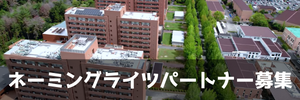(English announcement can be found in the latter half of this notice.)
広島大学バイオマスプロジェクト研究センターと中国地域バイオマス利用研究会の共催で広島大学バイオマスイブニングセミナーを開催しています。バイオマスに関する基本的な考え方から最先端の情報までをカバーして、この地域におけるバイオマスの活動に資することを目的とするものです。第63回を以下の日程で開催しますので、ご参集下さい。
日時 2018年4月23日(月)16:20~17:50
会場 広島大学東広島キャンパス工学部110講義室(変更の可能性あり)
https://www.hiroshima-u.ac.jp/eng/access/lectureroom
https://www.hiroshima-u.ac.jp/eng/access/building
https://www.hiroshima-u.ac.jp/access/higashihiroshima
プログラム
解説 広島大学大学院工学研究科 教授 松村 幸彦
講演 広島大学大学院工学研究科 M1 藤原 芳樹
「水熱条件下におけるカルシウムを用いたリンの回収」
リンは生命の活動に必須な元素ですが、近年リン資源の枯渇が懸念されています。そのため、新たなリン資源の獲得が必要であり、リンを多く含んでいる下水汚泥に注目が集まっており、処理方法として、有機物を短時間で分解できる水熱処理が期待されています。さらに、分解し、無機リンの状態になったリンにカルシウムを添加することによって、容易にリンを沈殿回収できる可能性があります。そこで、本研究では、カルシウムを用いてリンを水熱反応場から回収するため基礎的な検討を行うことを目的とします。
講演 広島大学大学院工学研究科 M2 橋本 壮侍
「MWCNTを用いたグルコースの水熱処理によるレブリン酸の生成」
レブリン酸は燃料添加剤やプラスチック原料などを合成する際の基幹物質として重要です。化石燃料の枯渇に伴い、草や木などの木質系バイオマスからレブリン酸を生成することが必要とされています。これまで、その生成過程において硫酸や塩酸などの強酸触媒を用いた処理方法が研究されてきましたが、それらの触媒は強酸かつ液体であることから廃液処理の工程や再利用性といった点に問題を抱えています。そこで,本研究では固体である多層カーボンナノチューブを触媒として用い、グルコースの水熱処理におけるレブリン酸の生成収率を確認しました。
講演 広島大学大学院工学研究科 D3 Apip AMRULLAH
1.「水熱処理中の下水汚泥構造の同定」
本研究では、水熱処理(HT)中の下水汚泥構造の実験的同定を示します。 下水汚泥の細胞構造を同定するために、HT温度を変化させました。 この研究では、活性汚泥を、130℃〜250℃の温度範囲で5MPaの固定圧力下で連続反応器を用いて水熱処理しました。 液体試料(非許容有機炭素、NPOC)および溶解した気体生成物(無機炭素、IC)中に存在する全炭素を定量するために、全有機炭素(TOC)分析器を用いて液体試料を分析しました。 固体試料を、ZEN顕微鏡2.3ブルー版を用いて、目的のLD A-Plan 40x / 0.55 Ph1および倍率40xで観察した。 180℃で細胞が壊れ始め、温度によりTOCが上昇したことが観察されました。
2.「下水汚泥の水熱処理における液相有機物の挙動」
熱水処理(HT)は、低エネルギー消費および燃料エネルギー密度の増加への貢献のために、有機廃棄物の前処理のための有望な選択肢です。 HTは、脱水のためのエネルギー効率的な方法としても採用されています。 本研究では、下水汚泥を130〜250℃の温度範囲で5MPaの一定圧力下で水熱条件下で管状反応器で処理し、液体および固体の最終生成物を分析しました。 本研究の目的は、下水汚泥の高温時における液相有機物の温度変化による挙動を調べることです。 全有機炭素は温度とともに増加しました。
司会 広島大学大学院工学研究科 博士研究員 Nattacha PAKSUNG
なお、18:00より意見交換会(参加費 800円)を開催します。ご都合の付く方はこちらにもご参加下さい。
The 63rd Hiroshima University Biomass Evening Seminar
(The32nd Hiroshima University ACE Seminar)
Biomass Project Research Center, Hiroshima University, and HOSTY Association are co-organizing the Hiroshima University Biomass Evening Seminar. This seminar covers topics from the fundamentals of biomass to the latest information so that it can contribute the activities on biomass in this district. The 63rd seminar will be held as follows. Please join.
Date & Time: Mon.23 Apr., 2018 16:20-17:50
Place: Engineering 110 Lecture Room, Higashi-Hiroshima Campus, Hiroshima University
(The room may be changed.)
https://www.hiroshima-u.ac.jp/eng/access/lectureroom
https://www.hiroshima-u.ac.jp/eng/access/building
https://www.hiroshima-u.ac.jp/access/higashihiroshima
Program
Commentary: Yukihiko MATSUMURA
Professor, Graduate School of Engineering, Hiroshima University
Lecture: Yoshiki FUJIWARA
M1 Student,Graduate School of Engineering, Hiroshima University
“Recovery of phosphorus using calcium under hydrothermal condition”
Phosphorus is an important nutrient for all living organization. It is essential for agriculture, like potassium and nitrogen. Plants absorb only inorganic phosphorus and fertilizer for plant is usually produced from phosphate rock. However it takes a long time for phosphorus rock to be form. There is a possibility of exhaustion in the future. Sewage sludge represents an important secondary phosphorus source. Hydrothermal treatment is effective method to recover phosphorus from sewage sludge There is very few study which focused on calcium to recover phosphorus. The research aim of this work is to recover phosphorus as calcium salt under hydrothermal condition.
Lecture: Soshi HASHIMOTO
M2 Student, Graduate School of Engineering, Hiroshima University
" Levulinic Acid Production from Glucose by Hydrothermal Treatment using MWCNT"
Levulinic acid is one of the important chemicals because it is the original chemicals to synthesize fuel additives, plastic material and so on. Due to the depletion of fossil fuel, levulinic acid production from woody biomass, such as grass and wood, is needed. So far, the researches about levulinic acid production using strong acid as homogeneous catalyst have been conducted. However, the problem is that those catalyst is strong acid and liquid. It is not suitable for waste liquid treatment and reuse. Therefore, levulinic acid production from glucose by hydrothermal treatment using multi walled carbon nanotubes as heterogeneous catalyst was investigated.
Lecture: Apip AMRULLAH
D3 Student,Graduate School of Engineering, Hiroshima University
1. “Identification of Sewage Sludge Structure during Hydrothermal Treatment”
This study presents experimental identification of sewage sludge structure during hydrothermal treatment (HT). For identification of the cell structure of sewage sludge, the HT temperature was varied. In this work, active sludge was treated hydrothermally using continuous reactor in the temperature range of 130-250 oC under the fix pressure of 5 MPa. The liquid sample was analyzed using total organic carbon (TOC) analyzer to quantify the total carbon present in the liquid (nonpurgeable organic carbon, NPOC) and in the dissolved gaseous product (inorganic carbon, IC). The solid sample was observed using ZEN microscope 2.3 blue edition, with objective LD A-Plan 40x/0.55 Ph1 and magnification 40x. It was observed at 180 oC the cell started to get broken and the TOC increased with temperature.
2. “Behavior of Organic Matter in Liquid Phase during Hydrothermal Treatment of Sewage Sludge”
Hydrothermal treatment (HT) is a promising option for pretreatment of organic waste, due to its low energy consumption and contribution to increasing fuel energy density. HT has been also adopted as an energy effective method for dewatering. In this study, sewage sludge was treated in a tubular reactor under hydrothermal condition over temperature range of 130 ̶ 250 °C under the fixed pressure of 5 MPa, and the final products that were liquid and solid were analyzed. The aim of this study was to investigate the behavior of organic matter in liquid phase during HT of sewage sludge by varying the temperature. The total organic carbon increased with temperature.
Chair: Nattacha PAKSUNG
Researcher , Graduate School of Engineering, Hiroshima University
We will hold the discussion meeting from 18:00 (800 JPY needed). Join this meeting, too if you are available.


 Home
Home









